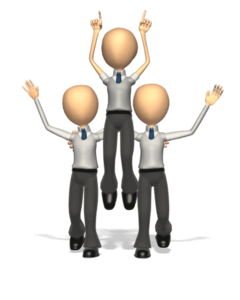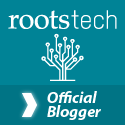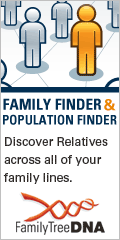Blog


New Free Online Historic Maps, DNA and more in Genealogy Gems Premium Episode 92
Old maps can tell us a lot more than just where our ancestors lived: They put events into geographic context, reveal surprising genealogical clues, and can be incorporated into Google Earth for analysis and storytelling.
It used to be pretty difficult to find old maps to use in your family history research, but it is a lot easier these days. Libraries and archives are digitizing them and putting them online. And in the newest episode (#92) of the Genealogy Gems Premium Podcast I’ll tell you about a terrific example of a website that has set the goal of have every image they possess (allowable by copyright) digitized and on their website by early 2013
Also in this episode I’m going to tell you about something pretty shocking that happened to me recently while speaking at an international genealogy conference. I was really taken by surprise, and received some unexpected questions. I will share those with you as well as some solid answers.
It’s another packed episode. If you are a member sign in now to start listening.

Not a Genealogy Gems Premium Member yet?
There’s never been a better time to join! You will get access to videos of my most popular classes, and as of today 92 Premium episodes providing hours of genealogical education and fun.
Click here to become a Member today
Premium Podcast Episode 92 – Shocking Questions, Helpful Answers
Date Published: October 4, 2012
[display_podcast]Click here to download the Show Notes pdf
NEWS
Online Historical Maps via an Indiana Collection
Old maps can tell us a lot more than just where our ancestors lived. It used to be pretty difficult to find old maps, but it’s a lot easier these days. Libraries and archives are digitizing them and putting them online. Let me give you an example, through the map collection at the Herman B. Wells Library at the Bloomington campus of Indiana University.
The Wells library has one of Indiana’s largest map collections, and it’s going online. The library hopes to have every image allowable by copyright on its website by early 2013. There are already a lot of great maps posted as well as links to other great resources, and not just for Indiana. There are census tract maps 1940 and 1950 and links to online gazetteers, which can help you locate place names all over the world. There are links to World War II maps, aerial and topographical maps.
Of course its best resources are Indiana Maps. If you click on its Indiana Maps page, you’ll come to another directory of maps. There’s a great collection of digitized historical maps, a sampling of the university’s much larger collection. If you have Hoosier roots, don’t miss the digitized county and statewide atlases spanning the late 19th to 20th century. These old atlases are not just map books: many are rich with historical information, illustrations and even pioneer biographies.
But my favorite collection on this site is the Sanborn Fire Insurance Maps. These were originally printed for city planners, insurance companies and others interested in detailed descriptions of urban areas. We love them as genealogists because they tell us fascinating things about our ancestors’ neighborhoods. You might find out whether your relative lived in a frame or brick building, if there was a stable on the property and what nearby buildings were used for. Property ownership is sometimes shown.
Whether you haev Indiana roots or not, this web collection of Sanborn maps is fantastic. You can read about the history of these maps, where to find them for places other than Indiana, and even check out a sample map key to all those exciting details on the maps. As far as Indiana Sanborn maps, they cover more than 300 cities from 1883 to 1966. Up to 1923, they have been digitized in color on the website, which is important because the map keys are in color. Post-1923 maps are still under copyright protection; you’ll have to find those in ProQuest’s Digital Sanborn Maps collection, which you may be able to access through a library near you.
Postal History in 77 Seconds
Do you want the fastest, silent U.S. history lesson ever? Go to http://vimeo.com/27376376 and play the brief video. It plots the location of post offices between 1700 and 1900, one way of seeing which areas were being lived in when.
The clock moves fast through this short video: after all, it shows 200 years of history in 77 seconds.
Think about this: where was one of your ancestors during those years? How many post offices (and by extension people) surrounded him or her? Were they on the edge of civilization or in the middle of it?
MAILBOX
Premium Podcast Listening
Suzanne asks about listening to the Premium Podcast on her iPad:
“I have a question about using the premium podcast content in iTunes on my iPad. Is there a way to add the premium subscription podcasts by opening iTunes on the iPad without having to open iTunes on the pc?”
Lisa’s Answer: iTunes on the iPad is pretty much just the iTunes store. Apple has recently launched a “Podcasts” app which is wonderful. It will add all of the podcasts you subscribe to. When I publish the next premium episode (within the next week) I’ll be able to test it to see if it will download new episodes.
Right now Apple’s Podcasts app appears to only transfer the episode you downloaded on your PC. However in the Settings of each podcast you can turn on “Subscription” and “Auto-Download” so I am hoping that means that it will go out and get new episodes without having to plug it back into the computer. It’s a very new app so stay tuned for more on that in the Premium Podcast
Listen to Premium 87 for listener suggestions.
Get my new book Turn Your iPad into a Genealogy Powerhouse
Inspirational Family History Stories
Longtime Premium Member Melissa wrote in to share a little gem she found:
NPR’s “Talk of the Nation”
“Son Discovers Fathers Secret Past on a Surfboard” May 23, 2012.
http://www.npr.org/programs/talk-of-the-nation/
GEM: Interview with Bennett Greenspan, Family Tree DNA
Something rather shocking that happened to me recently at a conference I was speaking at in Canada.
The night before the conference the local LDS church sponsored a dinner for the attendees of the conference. Church volunteers served up nice meals, sang a few songs, and then it was time for the Meet the Speakers panel discussion. I had been invited to participate, as were the six other genealogists who were teaching classes that weekend.
We all took the stage, and sat behind a white curtained table, passing the microphone back and forth as the moderator asked us good but rather predictable questions meant to touch on general areas of interest to most in the audience.
After we went up and down the panel a few times answering questions, the moderator opened it up for questions from the audience. Few raised their hands, but the first question was about using DNA in conjunction with family history research. I was pretty surprised by that because here was a panel of experts, many of home were particularly knowledgeable on Canadian research, and I had anticipated sort of sitting back while Canadian centric questions and answers bounded about.
The DNA question was pretty straight forward. The audience member said “I’ve thought about getting my DNA tested, but I really don’t think I understand how it all works. Can one of you explain it?” I looked to my left and right and none of the experts made a move. I slowly raised my hand and volunteered to answer since I have interviewed several experts on the subject for the Genealogy Gems Podcast, most recently Bennett Greenspan, the founder of Family Tree DNA.
After I gave a brief overview of how it works, the moderator asked for more questions. Hand after hand went up, and each question probed further and further into the subject of DNA – who should be tested, what the results would tell them, how one name DNA studies work and so on. And there I was, the lady who thought she would be a bit left out of the conversation, answering question after question about DNA.

I was pretty shocked that DNA was the dominating topic. But what it really revealed was that while most had heard of it being used as a Genealogy Tool, no one really knew or understood the specifics of how it worked well enough to feel they could incorporate it into the family history research.
I was even more shocked to be the resident expert if you will. I’m no DNA expert, but I found that my recent conversation with Bennett Greenspan and really helped solidify my understanding of how it works and what it can do for my research.
So I’m very happy to bring this interview exclusively to Genealogy Gems Premium Members. I hope you find this information as useful as I did.
Click here to learn more about Family Tree DNA

Early Bird Registration Now Open for RootsTech 2013 Genealogy Conference
RootsTech is one of the newest and most exciting national conferences. I’ll be there presenting classes and workshops, giving demos, meeting listeners at my exhibit booth and conducting interviews in the Media Center. Early birds definitely benefit, both from low prices, and access to the most exciting workshops. Here’s everything you need to know:
Popular Family History and Technology Conference Opens 2013 Early Bird Registration
SALT LAKE CITY-RootsTech, the largest family history conference in the United States in only two years, has announced the opening of its early bird registration for RootsTech 2013. The conference uniquely focuses on helping individuals at all skill levels to use the latest resources and technology to find, organize, preserve, and share their family’s connections and history. The conference will be held in Salt Lake City, Utah, March 21-23, 2013. For more information, go to RootsTech.org.
RootsTech 2013 will have content for young and old alike, regardless of expertise. World-class speakers from all over the country will address the latest topics and challenges, and there will be an exciting exhibitor hall with hands-on labs and demonstrations from 100+ product and service providers. Attendees can choose from over 250 classes to learn how to start their family history, solve personal research problems, and find better solutions for connecting with their family.
Conference Costs
| Full 3-Day Pass | $149 (Ends December 31, 2012) |
| Full One-Day Only Pass |
$89 |
| Student 3-Day Pass |
$39 (School ID required) |
| Getting Started 3-Day Pass | $39 (Early Bird) |
| Getting Started One-Day Pass |
$19 (Selection of fundamental classes) |
| Developer Day Pass | $89 (Full-day technology program for developers) |
Beginners
Those who are new to family history can attend a full track of Getting Started classes and labs to:
- Learn the basics of starting your family history.
- Discover 10 activities you can do to get started.
- Get hands-on experience with family history tools.
- Additional classes for LDS Church members: Learn the importance of family history, the basics to start your family tree, and how to qualify your ancestors’ names for temple work
Experienced Genealogists
Attend hands-on workshops and interactive classes to:
- Expand your skills and knowledge to accelerate your research.
- Help influence the future of genealogy.
- Learn and share new ways to adapt technologies to genealogy.
- Help leading-edge technology providers better understand your needs.
- Participate in panels, product demos, and many networking opportunities.
Developers
Developer Day (Friday, March 22, 2013) sessions are specifically designed to help participants:
- Explore the latest development techniques using:
- Cloud computing
- Mobile apps
- Social networking
- Geo-mapping
- Learn practical software development skills from industry leaders and pioneers.
- Create solutions to difficult problems in a rapidly-growing market segment.
- Access sponsors, vendors, and exhibitors that provide tools and services to enable innovations






